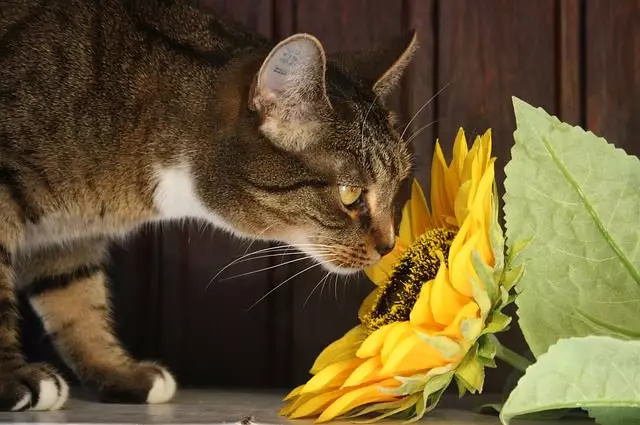As a pet owner, the thrill of nurturing a beautiful garden or enjoying fresh-cut flowers in your home can be a fulfilling endeavor. However, if you share your space with beloved cats, it’s essential to be vigilant about the types of plants you cultivate or bring indoors. While some plants are harmless, many common varieties can pose a threat to your pet. This article explores the importance of understanding plant toxicity, highlighting 15 plants that are particularly hazardous to cats, and providing practical tips on how to maintain a safe environment for your furry companions.
Plants can bring great joy and aesthetic appeal to our lives, but they can also harbor risks, especially for curious cats that explore their surroundings. Cats are naturally inquisitive and may nibble on flowers or leaves out of pure curiosity. It’s crucial for every pet owner to know which plants can be harmful to their cats. While the American Society for the Prevention of Cruelty to Animals (ASPCA) provides extensive resources, knowledge of a few particularly toxic species can help create a safer living environment.
1. Apple (Stem and Seeds): While the juicy flesh of an apple is generally safe for cats, the seeds and stems can be lethal due to the presence of cyanogenic compounds. Always ensure any fallen fruit is cleaned promptly and store apples safely away from feline reach.
2. Aloe Vera: Celebrated for its soothing properties in humans, aloe vera can be problematic for cats. Ingestion can lead to significant gastrointestinal distress, manifesting as vomiting and lack of appetite.
3. Azaleas: Not only are azaleas visually appealing, but they are also incredibly toxic to cats. Even a small amount can result in severe symptoms, including vomiting and potential heart failure.
4. Lilies: As one of the most dangerous plants for felines, lilies can cause acute kidney failure even after minimal exposure. It’s crucial to avoid keeping any type of lily in your home if cats are present.
5. Chamomile: Though often brewed for human consumption, chamomile can lead to serious side effects in cats, such as vomiting and bleeding tendencies.
6. Daffodils: The bulbs of daffodils contain the highest concentration of toxins and can provoke life-threatening reactions, including convulsions if ingested.
7. Daisies: While cheerful in appearance, daisies can cause adverse reactions, including gastrointestinal upset and skin irritation in cats.
8. Geraniums: Commonly found in homes, geraniums can lead to a range of issues, including depression and digestive disturbances in cats.
9. Gladiolus: Similar to daffodils, gladiolus bulbs are particularly toxic, leading to symptoms like lethargy and vomiting upon ingestion.
10. Tulips: Tulip bulbs can trigger significant poisoning in cats, with symptoms including drooling and profound gastrointestinal upset.
11. Sago Palm: This ornamental plant is exceptionally dangerous, leading to liver failure, and potentially death, if ingested by a cat.
12. Oleander: Highly toxic to both humans and pets, oleander can cause drooling and severe digestive issues for cats unfortunate enough to consume it.
13. Rhubarb: While rhubarb pie is a culinary delight, the plant itself can lead to tremors and kidney failure in cats if ingested.
14. Philodendron: A popular houseplant, philodendrons can irritate a cat’s mouth and cause significant discomfort if chewed on.
15. Mistletoe: Particularly during festive times, mistletoe poses risks, leading to serious symptoms like difficulty breathing if ingested.
Protecting your pets from harmful plants begins with informed choices. It’s essential to research any plant before introducing it to your home or garden. Consider opting for non-toxic alternatives such as spider plants, Boston ferns, or cat grass, which can provide greenery without the risk. Additionally, keeping a comprehensive list of toxic plants on hand can assist in preventing accidental exposure.
While the beauty of nature can enhance our living spaces, it can also introduce potential hazards to our furry friends. By understanding the risks associated with certain plants and taking proactive steps to safeguard our feline companions, we can enjoy the benefits of gardening and floral decor without compromising their safety. Regularly consult resources like the ASPCA for updates and information to ensure a peaceful coexistence with your pets.

